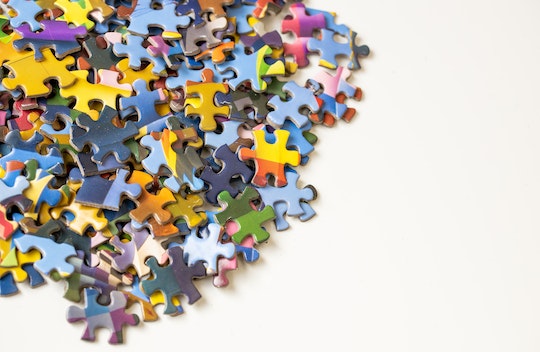The best way to start a jigsaw puzzle

There are two possible reasons for you to be searching for the best way to start a jigsaw puzzle. Either you are a beginner excited to start a new hobby and are looking for information before diving into the unknown, or you are a regular player who is wondering if there is something you can do to improve your performance.
Both are valid and good reasons, and they show that you are keen on making your experience with jigsaw puzzles even more enjoyable. Keep reading to clear all your doubts.
Preparation
Before heading to the best way to start a jigsaw puzzle, there are some preparations for you to do.
Tackling all the pieces at the same time is not effective nor efficient and will make it very difficult to know where to start at. Therefore, your first task before laying down the first piece is to sort them by color and by pieces with an edge. Depending on the image, sorting by color can be tricky, but you can also focus on patterns.
The point is that you do not need to sort all the pieces at once or be very thorough. The goal is to find a way to make rummaging through them more manageable. There are other tips and tricks that you can take into consideration when doing your preparation. For example, if it is possible, you should try to flip all the pieces up. However, these are not mandatory to have a smooth start, but are instead focused on improving your performance.
The best way to start a jigsaw puzzle
The best way to start a jigsaw puzzle depends on the image itself and the preference of the person building it. What works for some players may not work for others and the same applies to the jigsaw puzzle.
That being said, there are three ways of starting a jigsaw puzzle that stand out as the most used by expert players and as the most recommended.
1. Start with the corners
Corners are the most easily identifiable pieces as they have two straight edges. For that reason, many players consider them a good starting point.
They also allow you to progress in two different directions, which in turn allows you to channel your attention more effectively. You can start in one direction and, when feeling stuck, change to the other. Then you can begin filling in the corner progressively.
When your area of focus becomes too big and you start having difficulties finding the pieces you need, you can switch to another corner and start the process again. Do this until you have worked the four corners of the jigsaw puzzle. Eventually, you will be able to connect all of them and then focus on filling in the center of the jigsaw.
2. Start with the frame
This method of starting a jigsaw is similar to the previous one, but with an important difference. In this case, you may also start with a corner, but the goal is to build the frame of the puzzle completely first.
While with the first method your focus is on building each corner of the jigsaw first, this one allows for a broader focus at once. For example, if the image has colorful shapes or patterns around the edge, it will be easier to set apart the pieces with those colors and focus on building them attached to the frame.
This means that you can have several working sections at once. Some players consider this a disadvantage of this method. Others find it its biggest advantage because it gives them the option to focus on one section at a time and switch to another whenever they feel the need to clear their minds without taking a break from the jigsaw puzzle.
3. Start with a distinctive section of the puzzle
This can be the worst or the best way to start a jigsaw puzzle depending on the image you are trying to assemble. For example, if it is a busy image, with many details or repeated shapes and patterns, it might lead you to rummage through a great number of pieces, making it hard to find the ones you need.
However, it is one of the best ways to start a jigsaw with only two or three focusing points surrounded by gradient colors or repeated patterns.
Take this jigsaw as an example: Silhouette of a tree at sunset. Assembling the frame or focusing on the corners would both be bad methods to start because the color gradient of the pieces in those areas is very similar.
In this particular example, it would be best to focus on the distinctive sections whose pieces can be easily identified: the tree, the line of grass, and the circle of the sun. Since the three areas intersect, focusing on each one at a time would eventually lead to the assembly of the biggest portion of the jigsaw puzzle, reducing the number of pieces one has to go through to build the most difficult sections.
Looking at these three approaches, we are certain that you now understand why we said that the best way to start a jigsaw puzzle depends on the players and the image itself too. The first two are a matter of personal choice and you can give it a go at both of them to find which one you feel more comfortable with and find more efficient. The third method is dependent on the image you are challenging. It might be a bit tricky at first to identify the patterns you should focus on, but with a little bit of practice, it will come to you naturally, do not worry.